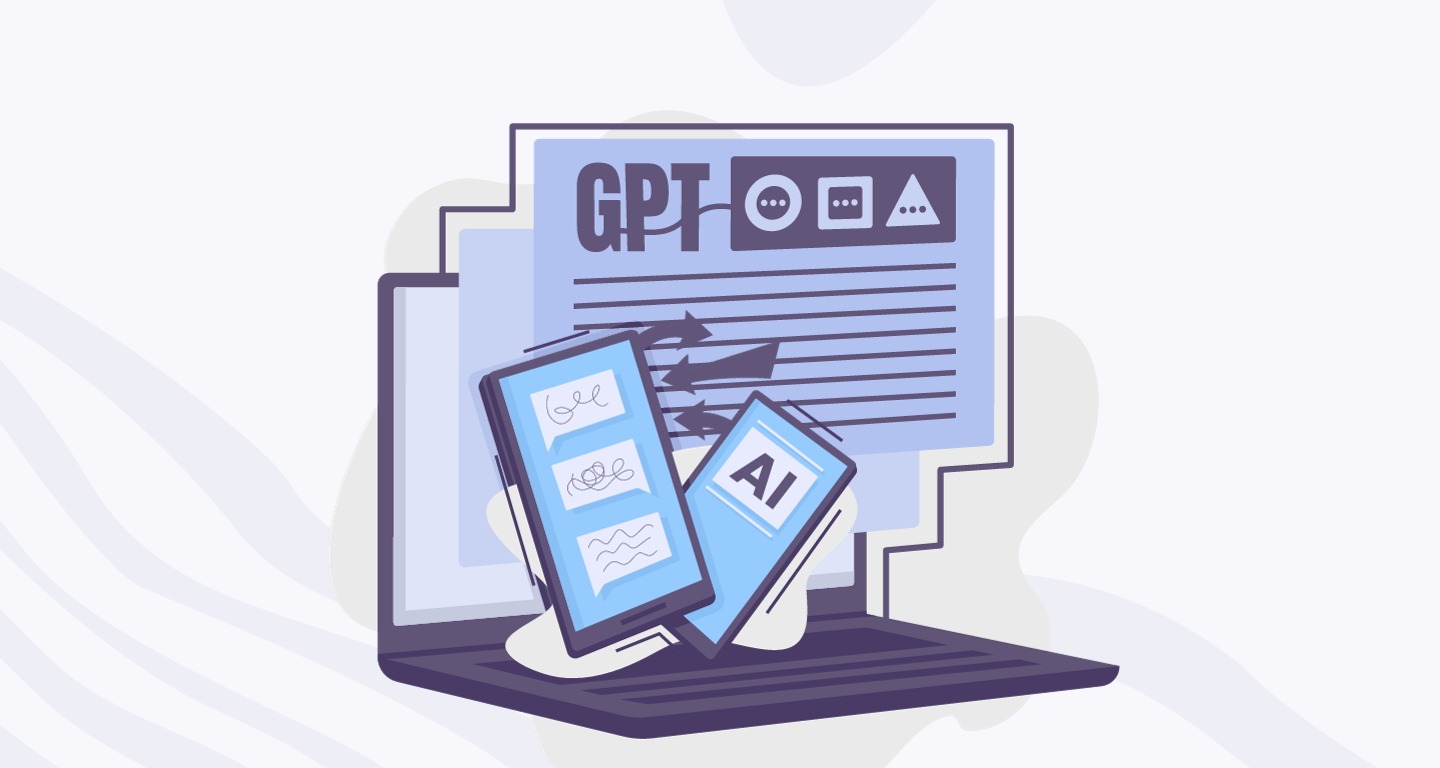Others
10 Super-Easy Tips to Get a Job Interview
Article written by Kate Williams
Product Marketing Manager at SurveySparrow
11 min read
19 September 2025

In this fast-paced world, opportunity doesn’t knock at your steps. Either you must grab it or create one for yourself. Let’s reserve creating an opportunity for some other day. For now, let’s focus on how to grab the existing opportunities and turn the tide in your favor.
Having the right skill set isn’t enough. You need to get a job interview and prove your worth. With the competition getting more robust, it isn’t as easy as it seems to grab an opportunity. Gone are the days when you have feared an interview, now consider yourself lucky if you get calls for an interview. Such has the world changed.
Why is it hard to get a job interview these days?
If you have already applied and waited for ages to get a call from the hiring manager, then you know how difficult it is to get an interview. You might have even questioned your skills and introspected whether you are worthy enough. But before you put all the blames on you, know that you aren’t alone.
Two reasons why you find it challenging to land a job interview.
- Everyone is upskilling, and hiring managers tend to choose candidates that offer more value.
- The drastic decline in the number of job roles due to the present crisis.
But don’t be disheartened. Just like every cloud has a silver lining, you too have yours! But you just haven’t utilized it to its full potential. With our super-easy job interview tips, you would be able to put the best of you out there as bait and go for the catch.
10 Easy Tips to Get a Job Interview
Just when you thought you had lost all your hopes, here we are with 10 super-easy tips that will help you get a job interview of your dreams. Without much ado, let’s dive in:
1. Prepare a catchy resume
The obvious and mandatory step to get a job interview.
Just consider your resume as a newspaper headline and do all that you can to grab the attention of your employer. If you have been waiting to hear from hiring managers for a long time now, then probably, it’s time to revamp your resume.
Start building your resume from scratch. You can either use an online resume builder or type it in a word document. The choice is yours, but make it professional, polite, and catchy at the same time.
Choose every word that goes into your resume with utmost care. You shouldn’t choose some random, computer-generated lines to express your achievements.
If you are resorting to an online resume builder, remember not to overuse themes and colors. When you overuse colors, it tends to distract the employer’s attention from the points you wanted to highlight.
If your skillset matches more than one position, then prepare a separate resume for each. The one-size-fits-all scheme doesn’t work in this case, and in fact, it reduces your chances of getting called.
2. Back-up your Resume with a Cover Letter
If you are new to the concept of cover letters, let’s put things into perspective. If the resume is a trailer, then the cover letter is the movie.
A resume gives just an overview of your skills and achievements, while the cover letter tells the story of how your skills helped you to achieve particular accomplishments in your previous jobs.
According to survey results published on Yahoo Finance, nearly 83% recruiters of 200 surveyed, consider candidates with a cover letter. Even though it is optional in many companies, hiring managers still prefer candidates who’d taken time to illustrate how their skills will benefit the company’s vision and mission.
Same as in the case of a resume, you can either go for a ready-made cover letter template or type it in a word document. In either case, make sure you don’t sound robotic, instead be passionate, and professional.
3. Get it both reviewed
We can’t stress enough how important it is to get both the resume and cover letter reviewed by your peers.
The process helps you identify the less attractive elements on your resume and cover letter, and you could work on it to make it grab the attention.
While the process of getting the resume reviewed is essential, the person who reviews it is equally important.
Instead of passing the documents over to your family members, get it reviewed either by your peers or by executives who review these documents professionally. In the latter case, you will have to pay a small amount as their consultation fee.
If you are lucky enough, you can even find ex-hiring managers who do the process.
4. Customizing the Job Request Email
A job request email should be as impactful as the resume. If it’s boring and monotonous, no one is ever going to read it completely, and your mail goes to the trash.
To make a job request attractive, personalize it, and don’t make it sound robotic. Here are some tips you can implement to make the email sound exciting:
- Type in an exciting subject that compels them to open the email
- Instead of Sir/Madam, try to address the recipient by their name
- Introduce yourself and your motive of contacting them
- Explain why you prefer the company and how your personal goals align with the company’s goals
- List out your strengths, and how it matches the job position
- End the email with a friendly note on how you wish to meet the recipient in person
- Attach both your resume and cover letter in PDF format with your name as the file name
5. Attach your Previous Works
Instead of stuffing the job request email with accolades and accomplishments, attach some of your previous works.
If you are a writer, then attaching a blog post that has got thousands of views and likes will take you a long way than an accomplishment that dates back a year or two. Along with the work, mention how you used your skills to achieve the feat.
If you don’t readily have a previous work to attach, then tell them you are open to a short assignment, and how your skills will be utilized for the successful completion of the same.
6. Try for Internal/employee Referral
Most companies, try to rope in the talents via internal referring, before opting for external recruitments. In this process, hiring managers ask the existing employees to refer/recommend talents from their external network.
P.S: Internal referring is different from internal recruitment.
The chances of getting a job interview are higher if an existing employee recommends you. Most candidates under-utilize this method, but let’s not do that. Here are 3 simple steps that would help you gain an internal referral.
Start reviewing your LinkedIn connection
LinkedIn is an Encyclopedia when it comes to opportunities. Start searching your connections to see if any professionals can earn you a referral. They could be your ex-classmate or ex-coworkers.
Once you have established a connection, you can ask them if their company is hiring and send them your resume.
Targeting employees of a particular company
If you wish to join a specific company, then it’s the best idea to start connecting with the existing employees of that company. This too can be done via LinkedIn. But unlike in the first step, the relation between you two should be strong enough, before you proceed to ask for an internal referral.
Connecting with like-minded people
LinkedIn helps you connect with like-minded people. There are groups of professionals from the same industry. Find the group that is similar to your job profile and start building connections.
Your chances of getting called for an interview increases when you are referred by employees belonging to the same department.
7. Put yourself out there
Be where hiring managers can find you. Instead of reaching out to them, put yourself out there, so that you get noticed by the HR. This increases your chances of getting a job interview and even securing the job. You can call this approach the reverse-recruitment tactic.
For this, you need to make your presence felt. If you aren’t active on LinkedIn, start being so. Depending on your department or field of work, maintain valuable connections, and go for personal branding.
Personal branding refers to establishing yourself as a trustworthy and credible figure in your industry.
While this isn’t an easy process, it surely reaps the benefits.
When you become a notable figure in your field, it will be hard for hiring managers to ignore you. This not only helps you get a job interview but also a better position with an attractive package.
8. Follow-up
No matter whichever way you resort to let the hiring managers know your presence, it is essential to follow up. In fact, it shows that you are genuinely interested in the opening.
But before you proceed, know that there is a thin line between following up and being persuasive. Try hard not to blur it.
Here’s how you can draft a follow-up email without being forceful:
- Use a compelling subject line
- Minimalism is the key. Use short sentences and draft a brief email
- Maintain an optimistic and professional tone
- Highlight your qualifications and emphasize why you’d be a good fit
- Attach the same documents as in your job request email
The frequency of the follow-up emails does matter. It is best to send out the first email after a week or two of sending the job request email. Companies deal with thousands of job request emails, and you need to give them enough time to review all of those.
If you still don’t hear from them, then send the next one after a gap of two weeks and so on. Bring some changes each time you send a follow-up email. If you didn’t receive a reply after two to four emails, it’s better to move on and look for a better opportunity.
P.S: Start sending follow up emails only after two weeks from the last date of application.
9. Maintain a detailed contact log
If you have applied in multiple companies, then it is best to maintain a contact log wherein you can specify the contact details of each HRs. Along with the details, you can even jot down a schedule for follow up.
By following this method, you can keep track of your job requests and, try reaching out for new roles in a systematic way.
Here’s what you can include in the contact log:
- Details of the Hiring Manager
- Details of any other existing employee, in case, you couldn’t connect with the HR.
- Job details and how it matches your skillset (details you included in the job request email)
- Last date of the job application
- The follow-up schedule (up to 4 emails)
If you have included the above details in your contact log, you can easily follow up without referring the job request email now and then.
10. Reduce the company’s risk
A company takes a significant risk every time they appoint a full-time employee, especially a fresher. You can improve your chances of getting called for an interview if you promise to work on a consulting basis or as a freelancer for a short period. Mention this in your job request email and the follow-up emails.
By doing so, you put yourself out as confident and optimistic about your skills, and this increases the company’s confidence in you.
Winding Up
Whatever you do, be unique. Companies value talents that seem one in a million. Thoroughly understand the job position, and let the company know how your strengths can fill those gaps. Above all, sound serious and optimistic. Companies hate candidates that send in incomplete and outdated resumes. Do let them know how much you value the opportunity.
We’d done our bit in helping you get a job interview, and now the ball is in your court. Revamp your resume, draft a cover letter, craft a new job email request, and tap the send button. If your documents are attractive enough, then the call you have been longing for will reach you soon.
Until then, keep your spirits high!

Thousands of brands trust SurveySparrow to turn feedback into growth. Try it free today!
Kate Williams
Excels in empowering visionary companies through storytelling and strategic go-to-market planning. With extensive experience in product marketing and customer experience management, she is an accomplished author, podcast host, and mentor, sharing her expertise across diverse platforms and audiences.
Related Articles

Others
Top 7 ChatGPT Plugins: Enhance Interactions with AI
12 MINUTES
8 November 2023

Others
Ingredients To Accelerate Digital Transformation in 2024
15 MINUTES
10 December 2020

Others
ALL YOU NEED TO KNOW ABOUT DREAMFORCE 2019
11 MINUTES
10 October 2019

Others
10 Best Customer Experience Books of All Time
11 MINUTES
30 August 2023
